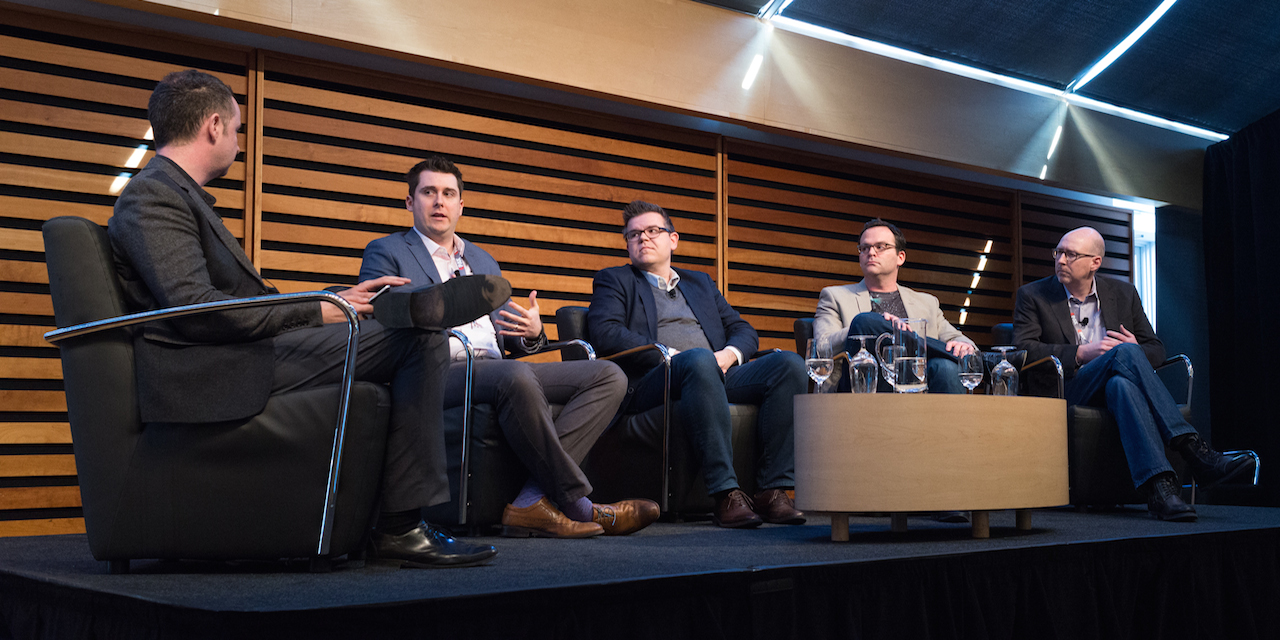In this market, we’re starting to see the buyers and sellers get together much more frequently, and I think that’s a really positive thing.
Mladen Raickovic, Google
If programmatic ads are a party, than private marketplaces are the VIP rooms. Though the cover charge may be greater, once inside, advertisers are treated to premium services. These invite-only exchanges whitelist specific advertisers, giving each more control over their digital ad spend.
And just like the front door of the nightclub, getting inside is often just as much about connections as it is about money.
“The technology is the infrastructure, but it’s the relationships that are necessary to actually make a lot of this happen,” said Mladen Raickovic, the strategic partner lead at Google, during a panel discussion on private marketplaces at Marketing’s Ad Tech conference on Tuesday.
“Without the relationships, you fall flat and you have slower innovation. In this market, we’re starting to see the buyers and sellers get together much more frequently, and I think that’s a really positive thing.”
These VIP marketplaces are a perfect fit for Canada’s relatively small industry, where many have some familiarity with peers on the opposite side of the market. This increased level of familiarity is poised grow Canada’s private marketplaces in ways other larger markets can’t, said Raickovic.
“In Canada, the benefit that we have is that it’s a ‘big small’ market. We all know each other,” he said.
Fellow panelist John Erhart, the director of sales for One by AOL Canada, said the numbers prove the significance of the tight-knit nature of the community.
“We find where we have our best and closest relationships, we’re seeing maybe 65% of our OMO properties that come into the remnant space being purchased through a deal ID, versus folks we don’t have day-to-day relationships with,” Erhart said. “Vendors that might be in the U.S., it might be closer to 25 or 30%,” he said.
While these private marketplaces are starting to take shape in the United States, they are quickly becoming the norm in Canada, with ad dollars moving in from traditional exchanges.
“In Canada we’re seeing almost 50% of the dollars transacted through private marketplaces today,” said Brad Jeffrey, the senior director of strategic partnerships, Canada at Index Exchange. “That’s been a trend since I’d say Q4 of 2013, which keeps going up and up and up.”
Related
• How Pro Football Can Explain Programmatic Success
Video has become a key area of growth for private marketplaces, where demand has been steadily increasing along with the rise of private marketplaces.
“The eyeballs are growing,” said John Rogers, the senior vice-president of media partnerships at Videology. “There’s a constrained environment across the broadcast partners, but as volume starts to increase, it’s not remnant per se for the broadcasters, but really this concept of premium programmatic, which is the next level after the direct sales force.”
Mladen added that private marketplaces themselves still have some maturing to do. He suggested that discoverability, transparency, workflow between buyers and sellers and better communication of objectives are all areas that will improve over time.
Pictured above (l-r): Shane Schick, editor-in-chief, Marketing; Brad Jeffrey, senior director, strategic partnerships – Canada, Index Exchange; Mladen Raickovic, strategic partner lead, Google; John Erhart, director of sales, One by AOL Canada; John Rogers, SVP media partnerships, Videology.
Get an even deeper dive by looking at the AdTech Canada 2016 conference highlights in The Marketing Debrief.











